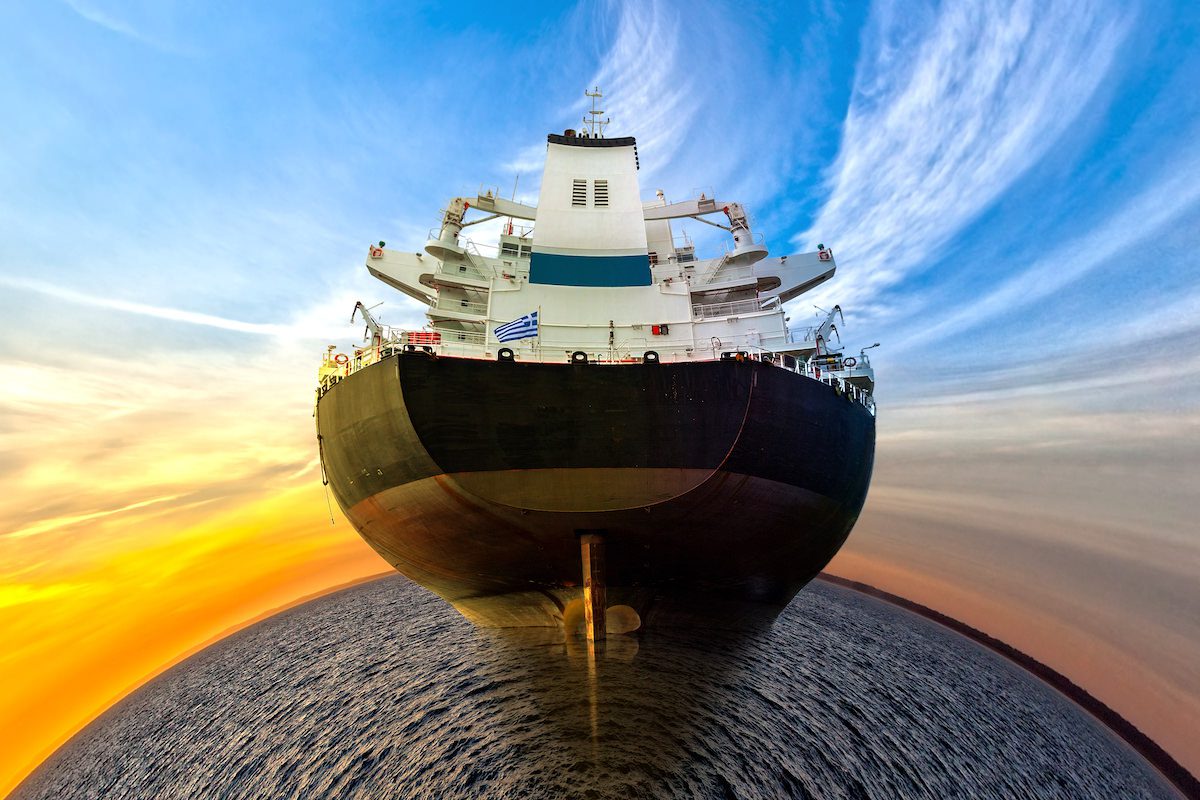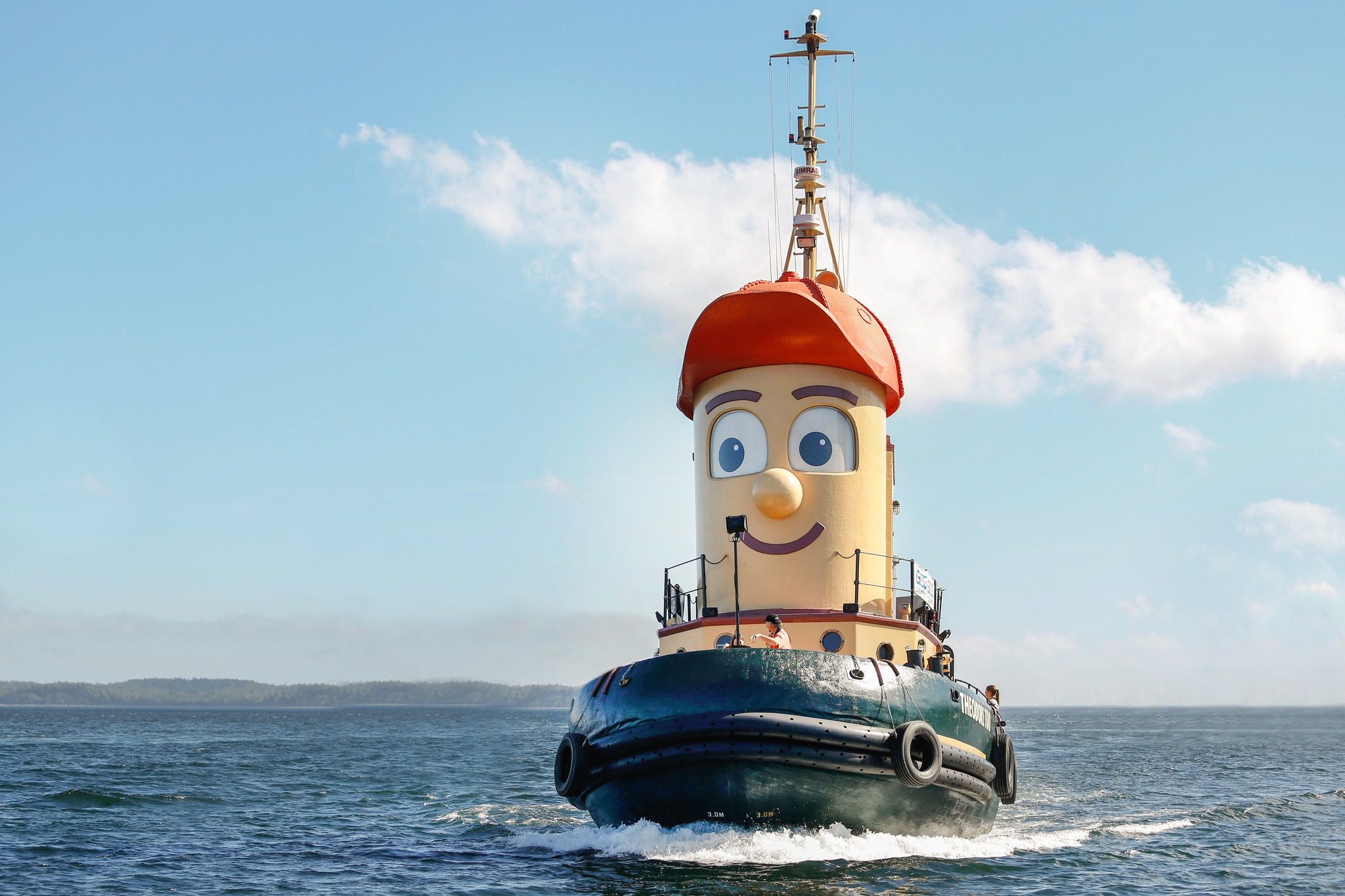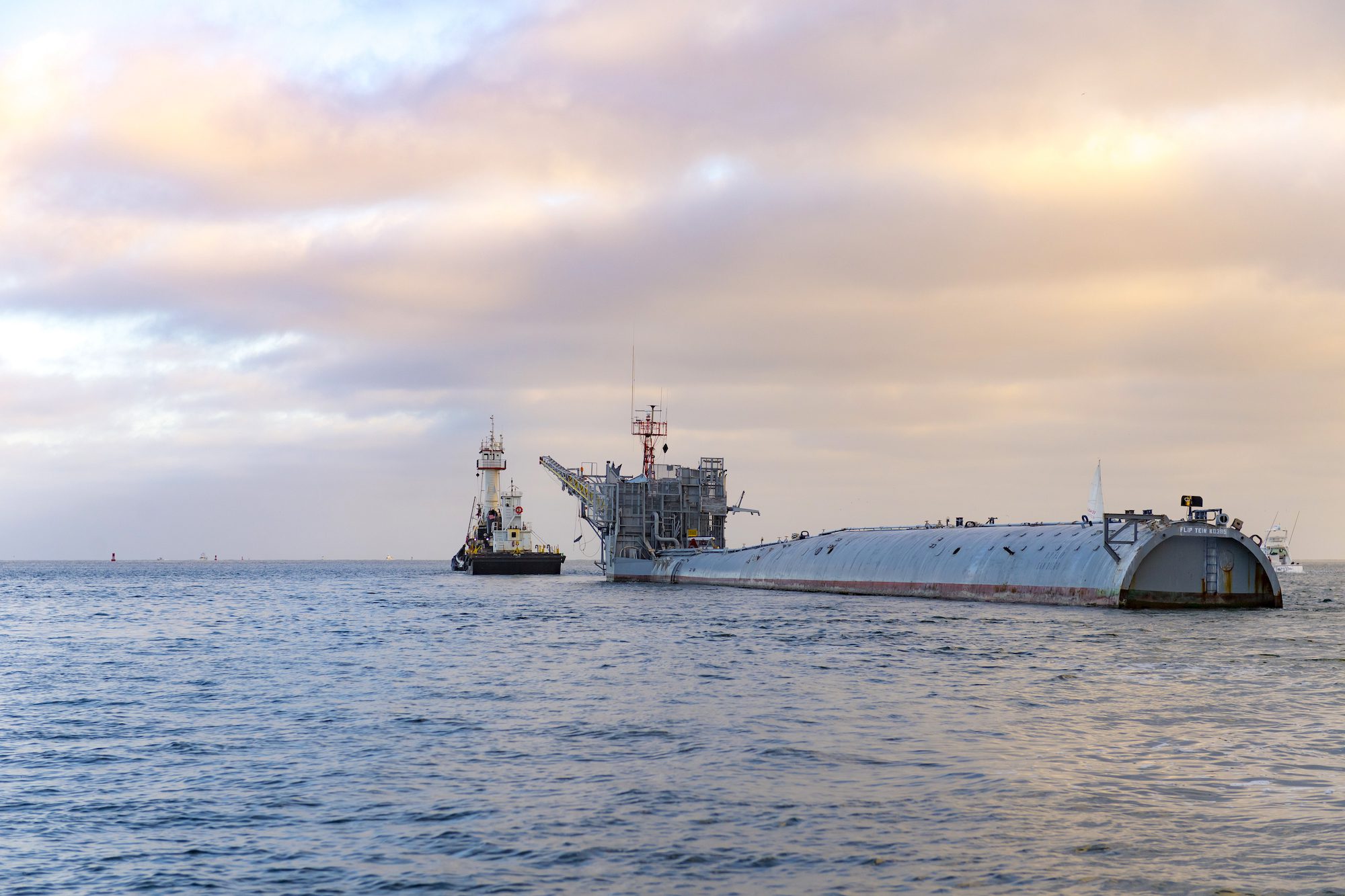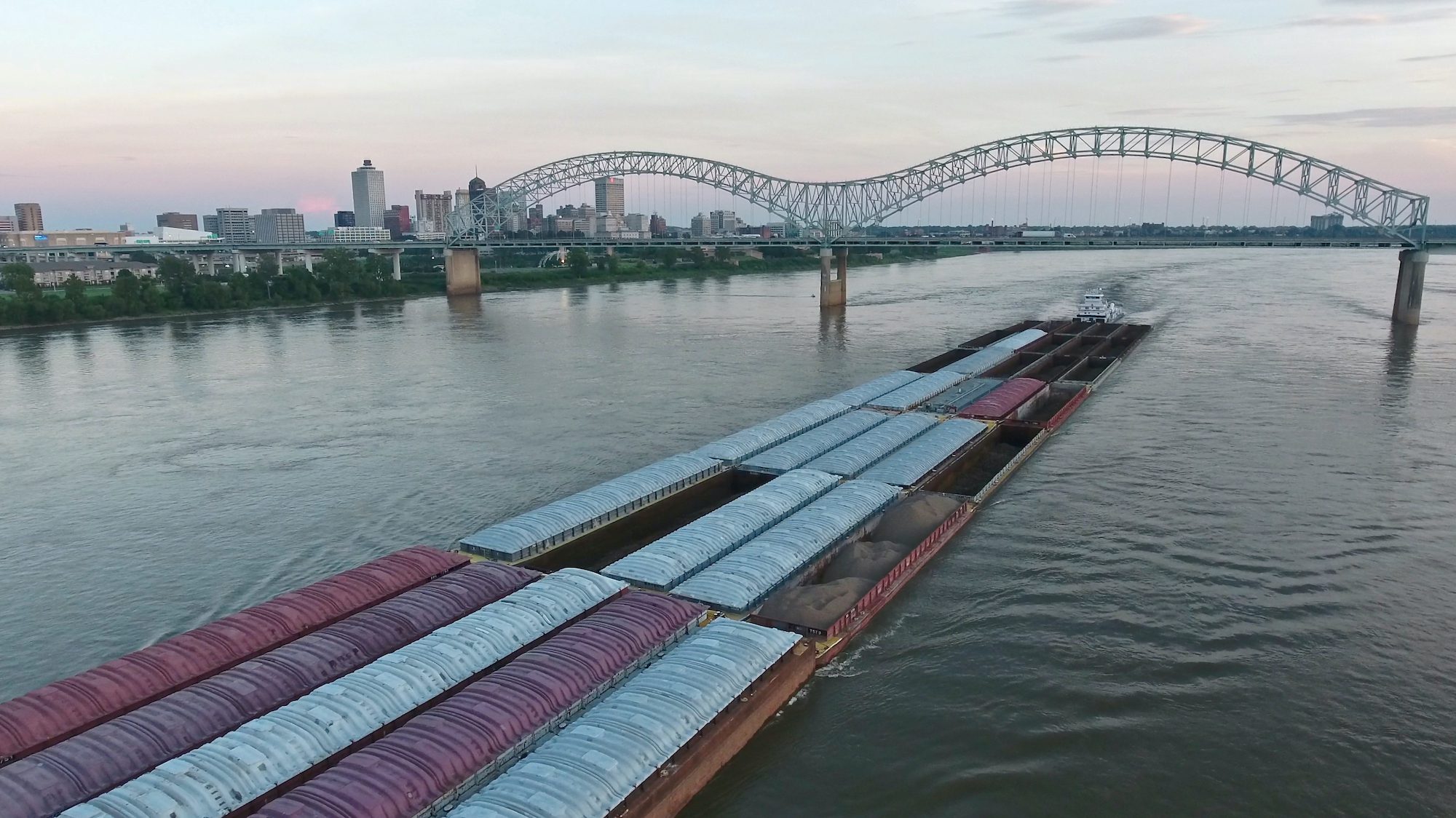Photo By Nightman1965, Shutterstock
By Captain George Livingstone (Editorial) As we enter 2018 what is the state of the international maritime industry?
The Cruise ship industry is booming, building incredibly big ships along with record profits and creating a few questions about safety. The Container shipping industry is after the same strategy, building more and more incredibly big ships minus the profit part, also generating a few questions about safety. Long anticipated consolidation in the container ship business is also starting to have a major impact on ports worldwide, especially given the billions already spent on port infrastructure.
Continued international political uncertainty and the surprising rise of exported oil from the United States is keeping the world oil trade in choppy waters. LNG and emissions standards are fundamentally changing the face of ships or at least what propels them, and is a direct response to challenges about the global carbon footprint.
The recent Panama and Suez Canal expansions have shined a spotlight on competition between the two waterways and changes the world trade picture.
Piracy is rearing its ugly head again in the African continent, let’s hope it’s managed smarter this time.
Automation along with 3D, 4D, and smart technology will undoubtedly change world shipping, the billion-dollar question is how?
The United States, one of the world’s top trading partners is moving away from the idea of multi-lateral trade agreements toward a more America First, insular strategy. The combination will bring a sea of change to worldwide trade. Not much going on.
Cruise
Let’s start with the good news story. According to Cruisemarketwatch.com, worldwide, the cruise industry has seen an annual compound passenger growth rate of 6.55% between 1990 and 2016. Growth strategies have been driven by larger capacity new builds and ship diversification.
In the next two years, 35 new ocean cruise ships will be ordered worldwide (CLIA Cruise Lines International Association 2017 Outlook). Many of those new builds will be true mega ships with passenger counts nearing 6,000. This segment of the international maritime industry is thriving. Advocates for international maritime safety, however, would be remiss if not posing the question how big is too big?
The question of safely evacuating 6,000 passengers from a ship in a timely matter needs to be addressed. If 6,000 passengers were required to abandon ship in one hour, that would mean 100 passengers would have to be alerted, gathered, organized and loaded into life boats, and one life boat splashed in the water every 60 seconds, repeated 60 times.
Container
On to the container ship business. A decade or so ago a few of the biggest container shipping lines in the world decided on a dramatic strategic shift toward building economies of scale (really big) to cut costs per TEU moved. There may or may not have been thoughts about driving out competition in the international container business as well. The result has seen less out right bankruptcies and more consolidation than was expected.
The overall strategy to build bigger and bigger container ships has not waivered. According to shipping consultant Dynamar, by the end of 2016 there were 178 Ultra Large Container Vessels (ULCVs), averaging 15,000 TEUs, operating on the Asia-Europe trade. Alphaliner says 2017 and 2018 will see another 80 ULCV’s enter the market. The introduction of 20,000 -24,000 TEU has arrived with the launching 40 to 50 Ultra Ultra Large Container vessels (UULCV’) over 18,000 TEU’s in the next two years. The result for the Asia-Europe trade will ultimately be a reduction in the overall number of ships in the trade, perhaps as much as 10-15%.
A second result will be the forced trickle down of ULCV’s presently on the Asia-Europe trade onto the Asia-Pacific and Mediterranean trades. For North America and the Med this means get ready for bigger container ships being pushed into service in your ports. Ultimately it will be the ports working together with local pilot groups who will be the final arbitrator on the subject of how big we can go as unless the lines themselves decide the matter by putting a stop to the strategy of build bigger.
Scale
Consider for a moment, the tallest building you can think of like New York’s Empire State building (1,450 ft or 400M). A 20,000 TEU Ultra Ultra Large Container Vessel will rival or exceed the Empire State building, it’s already a fact.
How important is the quality of steel when building a ship the size of the Empire State Building? How will significantly added stresses due to sheer size affect the working life of a UULCV? What if one of these giants breaks up mid-ocean at only seven or eight years old due to a lack of forethought on the importance of quality steel in the original naval architectural design? What about fire? What happens on a 20,000 TEU mega ship when a container fire breaks out in the middle of the container load? How is it extinguished? What if the ship is in port? What if it is in mid-ocean?
In Rushbrook’s Fire Aboard third edition (edited by Dr JF Lygate), considered the bible of modern day shipboard firefighting, it says “Fire has not ceased to take its toll of ships and human life with the passage of time, despite the growing pace of fire-fighting invention and technique.” A container fire onboard a 20,000 TEU could lead to a fully recognized maritime disaster. Which all begs a question already posed, how big is too big? For the sake of The Greater Global Public Trust, should serious safety discussions be considered regarding limits of modern ship sizes?
The greater strategy of building economies of scale has indeed reverberated throughout the world resulting in some outright bankruptcies (i.e. Hanjin) but a more significant effect has been the consolidation. In order to meet the needs of ever larger ships, ports, governments and even tax payers have committed ever greater resources on port development. Around the world ports have mostly gone “all in” just to stay in the game.
The present consolidation among the container lines is reducing the number of individual companies which is making many individual terminals within a port redundant. If a big company buys out a smaller why take on the lease of the smaller company’s terminals in a port? The big company will simply use their own terminals leaving ports holding the bag; happens to the excess terminal space? After spending billions on port development to accommodate ULCV’s will ports now be saddled with idle terminals right as the debt payments for port development come into full swing?
Technology
Meanwhile the 21st century races toward a technologically oriented future that few of us presently understand even though we will be profoundly affected. The topic that gets the most attention these days seems to be automated ships and the infrastructure needed to make it all work on the world’s ocean transportation systems; a very complicated and expensive proposition.
In my view, a far more immediate and significant development is the arrival of 3D, 4D and smart technology. Damen shipyard Group recently unveiled the world’s first full size ship propeller via 3D-print technology. Propellers are big folks, what’s next? Will many if not most manufactured products be in line for 3D and 4D print technology in the near future?
If manufacturing can be brought home (locally) through 3D and 4D print technology how will that affect world trade via ships? What would the simultaneous combination of advanced print manufacturing technology and collapsing trade agreements have on world trade? Will 3D, 4D and smart technology change the world container business from international, intermodal economies of scale to a more specific ‘on demand’ specialized market that moves smaller batches on smaller container ships to more localized destinations?
The State of the international maritime industry is obviously very complicated with many layers and political nuances. The introduction of giant ships, insular trade policies and very advanced 3D/4D and smart technology will change the future of world trade via ships and all involved should be paying close attention.
Unlock Exclusive Insights Today!
Join the gCaptain Club for curated content, insider opinions, and vibrant community discussions.

 Join The Club
Join The Club











